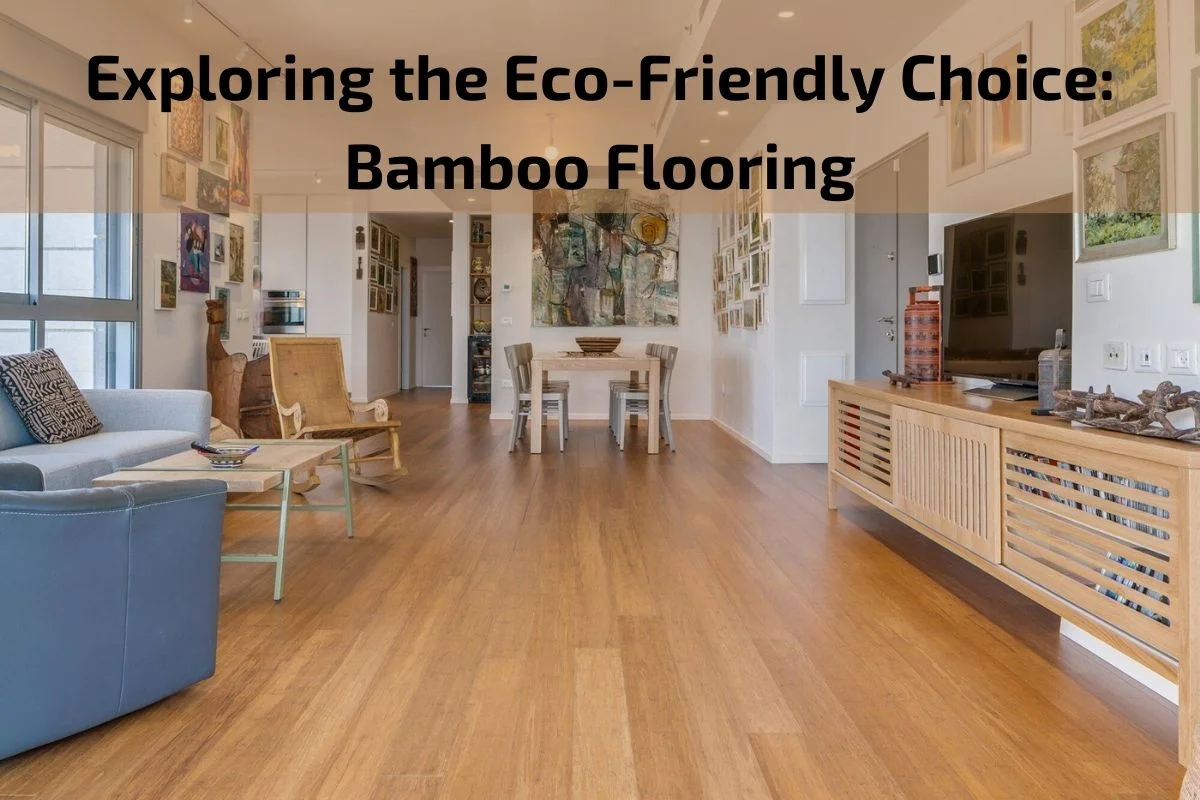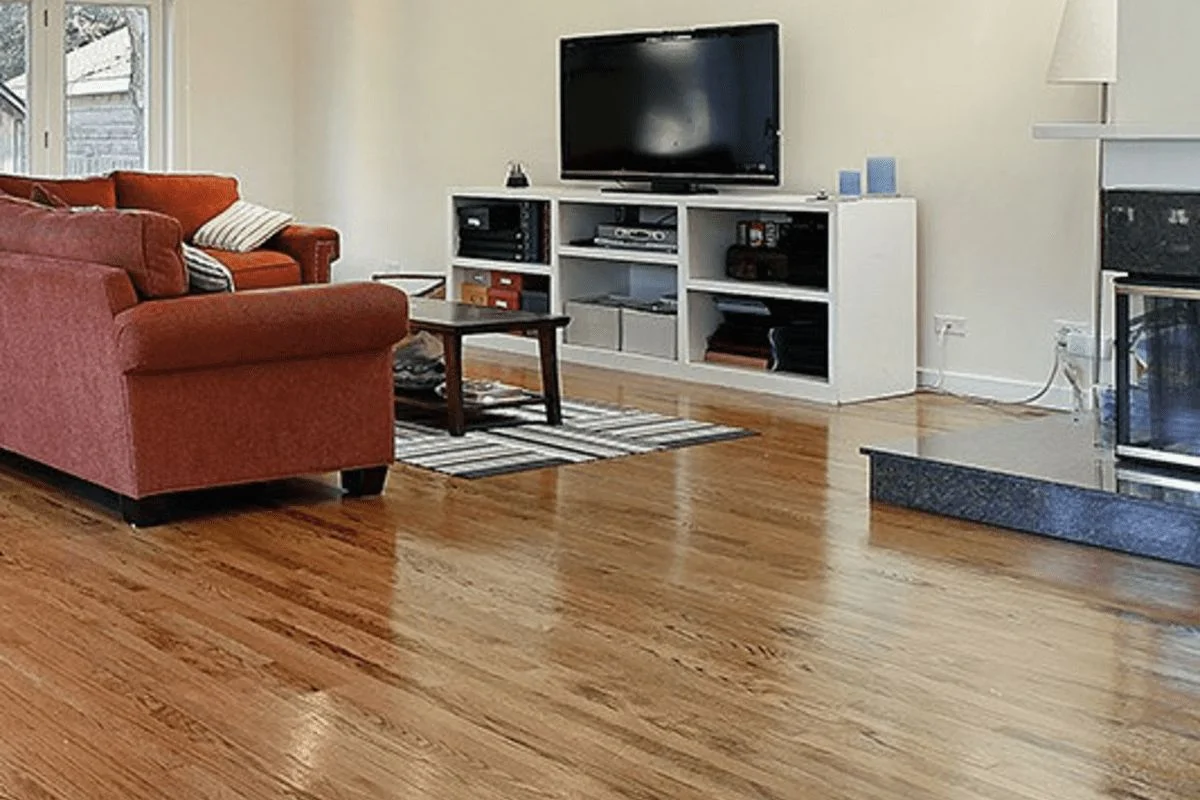Exploring the Eco-Friendly Choice: Bamboo Flooring
In a world increasingly attuned to the urgency of sustainable living, eco-conscious consumers seek environmentally friendly alternatives in every facet of their lives, including home construction and renovation. Among the array of green building materials available, bamboo stands out as a shining example of sustainability and versatility. As awareness grows regarding the environmental impact of traditional hardwood flooring, the spotlight turns to bamboo flooring as a compelling eco-friendly choice.
In this exploration, we embark on a journey into the world of bamboo flooring, delving deep into its origins, characteristics, and ecological significance. From its rapid growth cycle to its minimal environmental footprint, bamboo emerges as a frontrunner in the quest for sustainable flooring solutions.
Brief overview of the rising popularity of bamboo flooring:
In recent years, bamboo flooring has experienced a remarkable surge in popularity among homeowners, architects, and interior designers alike. This growing trend can be attributed to several factors that distinguish bamboo flooring as a desirable and eco-friendly alternative to traditional hardwood options.
First and foremost, bamboo flooring has gained recognition for its sustainability credentials. As awareness of environmental issues continues to rise, consumers are increasingly drawn to bamboo due to its rapid growth rate and replenishable nature. Unlike hardwood trees, which can take decades to mature, bamboo reaches full maturity within just a few years, making it an incredibly renewable resource. This inherent sustainability aligns with the values of conscientious consumers seeking to reduce their ecological footprint.
Furthermore, bamboo flooring offers an aesthetically pleasing and versatile option for interior spaces. Its natural grain patterns and warm tones lend a sense of elegance and sophistication to any room, while its ability to complement a wide range of interior styles—from modern to rustic—makes it a versatile choice for homeowners and designers alike.
Additionally, bamboo flooring boasts impressive durability and resilience, rivaling that of traditional hardwoods such as oak or maple. Its dense composition and strength make it well-suited for high-traffic areas and households with pets or children, where durability is paramount.
Moreover, advancements in manufacturing techniques have expanded the range of bamboo flooring options available to consumers. From traditional solid bamboo planks to engineered bamboo flooring, which offers enhanced stability and moisture resistance, there is a diverse array of choices to suit various preferences and installation requirements.
Importance of sustainable BAMBOO FLOORING options in Modern Homes
In the context of contemporary living, the importance of sustainable choices cannot be overstated. As environmental consciousness grows, homeowners are increasingly seeking eco-friendly options for their living spaces, including flooring materials. Bamboo flooring, renowned for its sustainability, has emerged as a pivotal choice for modern homes, addressing several critical considerations:
- Environmental Conservation: Bamboo, a fast-growing grass species, matures much more rapidly than traditional hardwood trees. While hardwood forests can take decades or even centuries to reach maturity, bamboo reaches full growth within a span of three to five years. This rapid growth rate makes bamboo an exceptionally renewable resource, alleviating pressure on forests and promoting biodiversity.
- Carbon Sequestration: Bamboo forests exhibit exceptional carbon sequestration capabilities, absorbing carbon dioxide from the atmosphere at a much faster rate than hardwood forests. As a result, bamboo cultivation contributes to mitigating climate change by reducing greenhouse gas emissions and enhancing air quality.
- Resource Efficiency: Bamboo stands out for its resource efficiency, requiring minimal water, pesticides, and fertilizers to thrive. Moreover, bamboo can be harvested without uprooting the entire plant, as it regenerates from its roots, allowing for sustainable harvesting practices that minimize environmental impact.
- Reduced Deforestation: By choosing bamboo flooring over traditional hardwood options, homeowners contribute to the preservation of valuable forest ecosystems. The demand for bamboo incentivizes sustainable forestry practices and reduces reliance on timber sourced from vulnerable or endangered forest habitats.
- Indoor Air Quality: Bamboo flooring, typically manufactured using non-toxic adhesives and finishes, promotes healthier indoor air quality by minimizing off-gassing of volatile organic compounds (VOCs). This feature is particularly advantageous for households with individuals sensitive to indoor air pollutants, such as asthma or allergies.
- Longevity and Durability: Sustainable bamboo flooring offers homeowners a durable and long-lasting flooring solution that withstands the rigors of daily life. Its innate strength and resilience make it an ideal choice for high-traffic areas, ensuring longevity and minimizing the need for frequent replacements or renovations.
Definition and characteristics of bamboo flooring
Bamboo flooring is a type of flooring material derived from the bamboo plant, a fast-growing and renewable resource known for its sustainability and versatility. Here are the definition and key characteristics of bamboo flooring:
Definition: Bamboo flooring is a flooring option made from bamboo, a type of grass that grows abundantly in various parts of the world. Bamboo is harvested and processed into planks or tiles, which are then used as flooring material in residential and commercial spaces. Bamboo flooring offers a sustainable alternative to traditional hardwood flooring, with a unique aesthetic appeal and environmental benefits.
Characteristics:
- Sustainability: Bamboo flooring is highly sustainable due to the rapid growth and renewability of bamboo plants. Bamboo can reach maturity in as little as three to five years, making it a more environmentally friendly option compared to hardwood trees, which can take several decades to mature.
- Strength and Durability: Bamboo flooring is prized for its strength and durability, often rivaling traditional hardwoods such as oak or maple. Bamboo’s dense fibers and natural resins give it excellent structural integrity, making it suitable for high-traffic areas in residential and commercial settings.
- Aesthetic Appeal: Bamboo flooring boasts a distinctive appearance characterized by its natural grain patterns and warm tones. It adds a touch of elegance and sophistication to any interior space, complementing a wide range of design styles from contemporary to traditional.
- Versatility: Bamboo flooring comes in various styles, including solid bamboo planks, engineered bamboo, and strand-woven bamboo. Each type offers unique features and benefits, allowing homeowners and designers to choose the best option based on their preferences and requirements.
- Moisture Resistance: Bamboo flooring exhibits natural resistance to moisture and humidity, making it suitable for installation in areas prone to dampness such as kitchens, bathrooms, and basements. However, it is essential to follow proper installation and maintenance guidelines to prevent moisture-related issues.
- Eco-Friendly Manufacturing: Bamboo flooring is typically manufactured using environmentally friendly processes and adhesives. Low-VOC (volatile organic compound) finishes are commonly used to minimize off-gassing and promote indoor air quality, making bamboo flooring a healthier choice for occupant
Environmental Benefits of Bamboo Flooring
Bamboo flooring stands out as a sustainable and environmentally friendly option for flooring, offering numerous benefits that contribute to ecological preservation and conservation efforts. Here are some key environmental benefits of bamboo flooring:
- Rapid Renewable Resource: Bamboo is one of the fastest-growing plants on Earth, with some species capable of growing up to 36 inches in a single day. Unlike hardwood trees, which can take decades or even centuries to reach maturity, bamboo reaches full growth and maturity within three to five years. This rapid growth rate makes bamboo a highly renewable and sustainable resource for flooring materials.
- Reduced Deforestation: The popularity of bamboo flooring helps alleviate the pressure on natural forests and reduces the need for harvesting traditional hardwood trees. By choosing bamboo over hardwood flooring options, consumers contribute to the preservation of valuable forest ecosystems and biodiversity.
- Carbon Sequestration: Bamboo forests play a crucial role in mitigating climate change by sequestering carbon dioxide from the atmosphere at a much faster rate than traditional hardwood forests. Bamboo plants absorb carbon dioxide during photosynthesis and store it within their biomass, helping to reduce greenhouse gas emissions and combat global warming.
- Minimal Environmental Impact: Bamboo cultivation requires minimal water, pesticides, and fertilizers compared to traditional hardwood trees. Bamboo’s natural resistance to pests and diseases, coupled with its ability to thrive in diverse climatic conditions, reduces the need for chemical inputs and minimizes environmental pollution.
- Sustainable Harvesting Practices: Bamboo can be harvested without causing harm to the plant or its surrounding ecosystem. Unlike hardwood trees, which are often clear-cut during harvesting, bamboo can be selectively harvested by cutting mature stalks while allowing the plant to continue growing and regenerating. This sustainable harvesting practice ensures the long-term health and viability of bamboo forests.
- Eco-Friendly Manufacturing Processes: Bamboo flooring is typically manufactured using environmentally friendly processes and adhesives. Manufacturers prioritize the use of non-toxic finishes and low-VOC (volatile organic compound) adhesives to minimize harmful emissions and promote indoor air quality, creating a healthier living environment for occupants.
Maintenance and Care Tips for Bamboo Flooring
Proper maintenance and care are essential to preserve the beauty, durability, and longevity of bamboo flooring. By following these maintenance tips and best practices, homeowners can ensure that their bamboo floors remain in optimal condition for years to come:
- Regular Cleaning:
- Sweep or vacuum the bamboo flooring regularly to remove dust, dirt, and debris that can scratch the surface.
- Use a soft-bristled broom or a vacuum cleaner with a soft brush attachment to prevent scratching.
Damp Mopping:
- Clean the bamboo flooring periodically with a damp mop using a pH-balanced, hardwood floor cleaner or a manufacturer-approved cleaning solution.
- Avoid using excessive water or soaking the flooring, as moisture can cause damage and warping.
Spill Cleanup:
- Immediately wipe up spills and liquid stains using a clean, damp cloth to prevent them from seeping into the bamboo flooring and causing damage.
- Avoid using harsh chemicals or abrasive cleaners, as they can strip away the finish and damage the bamboo surface.
Protection from Furniture:
- Use furniture pads or felt protectors under the legs of furniture to prevent scratches, dents, and indentations on the bamboo flooring when moving or rearranging furniture.
- Lift heavy furniture instead of dragging it across the floor to avoid damaging the surface.
Avoid High Heels and Sharp Objects:
- Discourage walking on bamboo flooring with high heels or shoes with sharp, pointed heels, as they can dent or scratch the surface.
- Place doormats or rugs at entryways to trap dirt, moisture, and grit from shoes and prevent them from being tracked onto the bamboo flooring.
Control Indoor Climate:
- Maintain stable indoor humidity levels between 30% to 50% to prevent excessive expansion or contraction of the bamboo flooring due to fluctuations in moisture.
- Use a humidifier or dehumidifier as needed to regulate humidity levels, especially during dry or humid seasons.
Preventive Maintenance:
- Trim pet nails regularly to prevent scratches and damage to the bamboo flooring surface.
- Place mats or area rugs in high-traffic areas, such as entryways and hallways, to reduce wear and tear on the bamboo flooring.
- Rotate area rugs periodically to ensure even wear and prevent discoloration underneath.
Professional Maintenance:
- Consider scheduling professional deep cleaning and maintenance for bamboo flooring periodically, especially in high-traffic areas or commercial settings.
- Consult with flooring experts or manufacturers for specific care recommendations and maintenance guidelines tailored to your bamboo flooring product.
Conclusion
In conclusion, bamboo flooring stands as a sustainable, durable, and aesthetically pleasing option for homeowners seeking eco-friendly flooring solutions. Throughout this exploration, we’ve highlighted the numerous benefits of bamboo flooring, including its rapid renewability, reduced environmental impact, and impressive strength and resilience.






0 comments